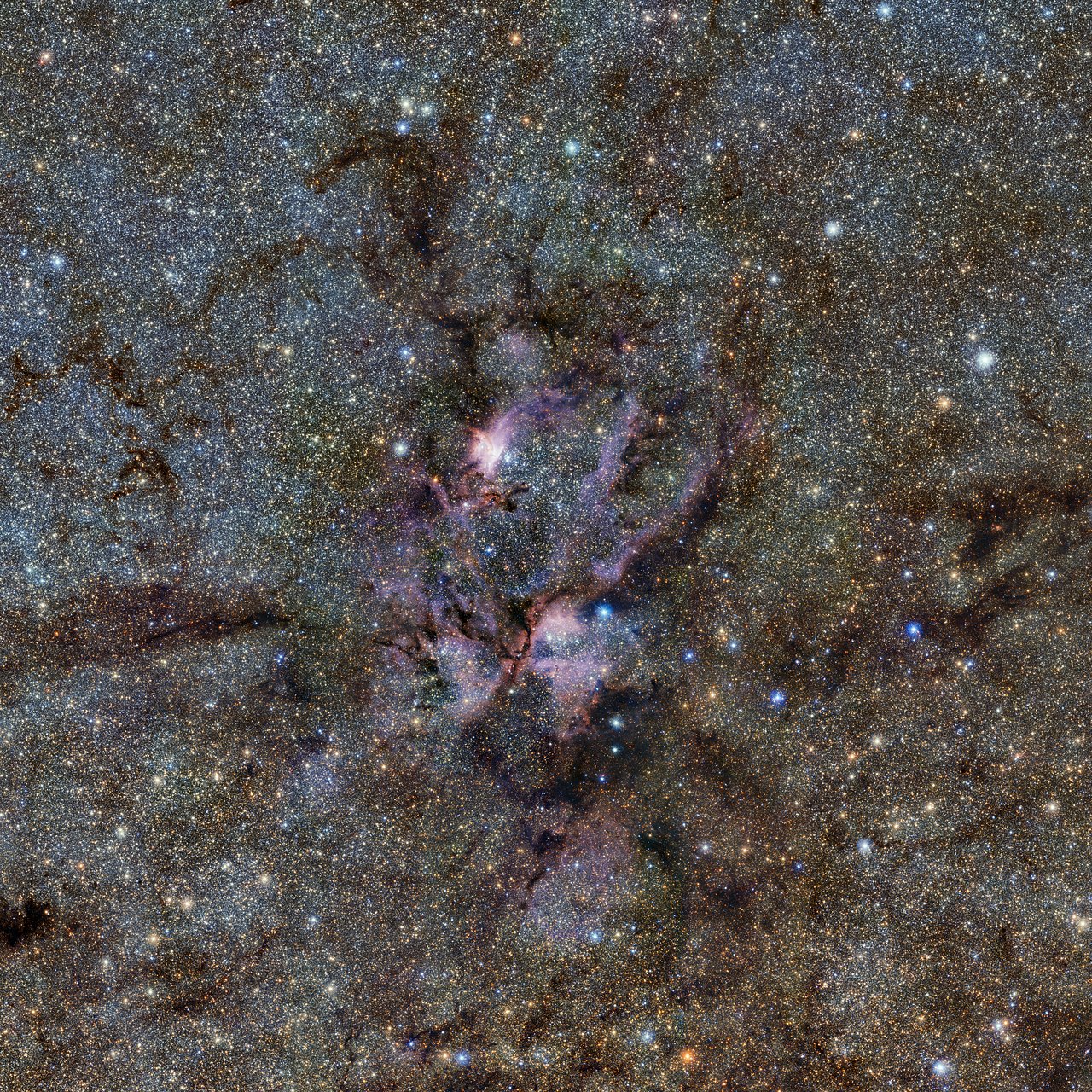Welcome to DU!
The truly grassroots left-of-center political community where regular people, not algorithms, drive the discussions and set the standards.
Join the community:
Create a free account
Support DU (and get rid of ads!):
Become a Star Member
Latest Breaking News
General Discussion
The DU Lounge
All Forums
Issue Forums
Culture Forums
Alliance Forums
Region Forums
Support Forums
Help & Search
Science
Related: About this forumThey may call this a "space lobster" but I'm calling it the FSM

A new image from ESO’s VISTA telescope captures a celestial landscape of glowing clouds of gas and tendrils of dust surrounding hot young stars. This infrared view reveals the stellar nursery known as NGC 6357 in a surprising new light. It was taken as part of a VISTA survey that is currently scanning the Milky Way in a bid to map our galaxy’s structure and explain how it formed.
Located around 8000 light-years away in the constellation of Scorpius (The Scorpion), NGC 6357 — sometimes nicknamed the Lobster Nebula [1] due to its appearance in visible-light images — is a region filled with vast clouds of gas and tendrils of dark dust. These clouds are forming stars, including massive hot stars which glow a brilliant blue-white in visible light.
This image uses infrared data from ESO’s Visible and Infrared Survey Telescope for Astronomy (VISTA) at the Paranal Observatory in Chile. It is just a small part of a huge survey called VISTA Variables in the Vía Láctea (VVV) that is imaging the central parts of the Galaxy (eso1242). The new picture presents a drastically different view to that seen in visible-light images — such as the image taken with the 1.5-metre Danish telescope at La Silla — as infrared radiation can penetrate much of the covering of dust that shrouds the object [2].
One of the bright young stars in NGC 6357, known as Pismis 24-1, was thought to be the most massive star known — until it was found to actually be made up of at least three huge bright stars, each with a mass of under 100 times that of our Sun. Even so, these stars are still heavyweights — some of the most massive in our Milky Way. Pismis 24-1 is the brightest object in the Pismis 24 star cluster, a bunch of stars that are all thought to have formed at the same time within NGC 6357.
http://www.eso.org/public/news/eso1309/
Behold the Flying Spaghetti Monster! Ramen!
InfoView thread info, including edit history
TrashPut this thread in your Trash Can (My DU » Trash Can)
BookmarkAdd this thread to your Bookmarks (My DU » Bookmarks)
6 replies, 1489 views
ShareGet links to this post and/or share on social media
AlertAlert this post for a rule violation
PowersThere are no powers you can use on this post
EditCannot edit other people's posts
ReplyReply to this post
EditCannot edit other people's posts
Rec (6)
ReplyReply to this post
6 replies
 = new reply since forum marked as read
Highlight:
NoneDon't highlight anything
5 newestHighlight 5 most recent replies
= new reply since forum marked as read
Highlight:
NoneDon't highlight anything
5 newestHighlight 5 most recent replies
They may call this a "space lobster" but I'm calling it the FSM (Original Post)
n2doc
Feb 2013
OP
Duer 157099
(17,742 posts)1. I see a great big question mark
Which, I think, is kind of neat.
formercia
(18,479 posts)2. Ramen
May you be touched by his Noodly Appendage.
Arctic Dave
(13,812 posts)3. Ramen.
I have seen the glory of the noodley appendages.
Arggghhh.
lastlib
(23,288 posts)4. There's His noodly appendage!!
I can almost feel it touching me!
Blessed are the pasta-makers! May the Sauce be with you!
Judi Lynn
(160,630 posts)5. I cringe and grovel in fear at its might. Blessed be the Flying Spaghetti Monster. Ramen.
Javaman
(62,534 posts)6. Cathulhu is not amused. nt